We recommend purchasing sustainable and bird friendly coffee that supports sustainable farms and bird friendly ecosystems!
[Updated April 2020]
This post contains affiliate links for which Expedition Wildlife may receive a commission (where applicable) at no additional cost to you.
Switching to sustainable and bird friendly coffee means making the move to help sustainable farms and bird friendly ecosystems.
It’s no secret – many people love coffee.
According to Euromonitor International, people consumed over 7 million tons of coffee around the world in 2016.
Personally, I drink two cups of coffee per day – that’s over 700 cups per year, or around 7 kg of coffee beans!! That’s practically what two coffee trees can produce in one year.
Given this substantial footprint, it’s worth taking a closer look at how coffee is farmed and how we can reduce our footprint on the environment AND the species that depend on these environments.
Coffee History: Moving towards sustainable and bird friendly coffee farms
Traditionally, coffee trees were farmed in mixed forest plots, usually fully or partially shade-grown.
Shade-grown trees are shaded by other, taller plants or trees. So, coffee trees would grow in the same plot of land as other taller trees, such as Macadamia trees.
Scientific research shows that this form of intercropping, or intermixing coffee trees with other kinds of agricultural plants or trees, can be good for a farm’s economy, as they can sell multiple, harvest-able products.
What’s more, intercropping reduces soil erosion and increases the nutrients in the soil. This allows for a more diverse ecosystem, which benefits all kinds of bugs, reptiles, birds, and more.
Birds in particular use habitats with varied vegetation structures during critical stages in their life histories, including nesting and overwintering.
Structural diversity in the ecosystem also allows for variation in other species, including those upon which birds predate.
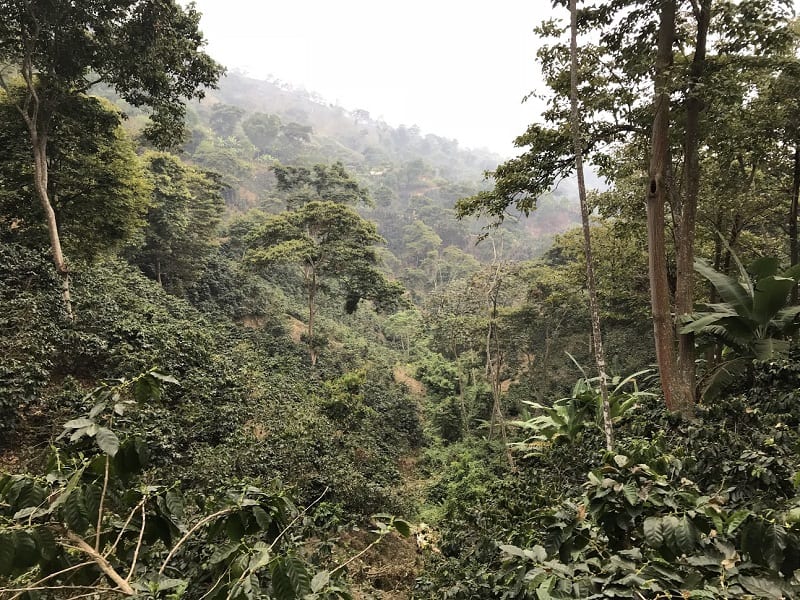
Note the mixing of various plant species, culminating in a varied vertical and horizontal landscape. Photo by Jonathon Valente
Sustainable coffee farms mean a happy coffee future
Decades ago, with the continuous increase in coffee consumption, practices changed toward production over sustainability.
Whole plots of land were cleared to allow more room for coffee tree varieties that grow in full sun, which, on average, doubles the coffee bean production compared to shaded trees.
These landscapes, however, produce erodible and nutrient-poor soils, and less diverse habitat to support many varieties of wildlife. Full-sun farms also support pests, such as the Coffee Borer Beetle (Hypothenemus hampei), which decimates coffee trees and farms.
As such, the movement for sustainable and bird friendly coffee farms was born and began to flourish.
Principles and practices for sustainable coffee production are now a regular topic of conversation in the coffee world. Yet, still many of these farms are beat out by the high-yielding sun coffee demand.
So, how do you select coffee that will benefit birds and the environment?
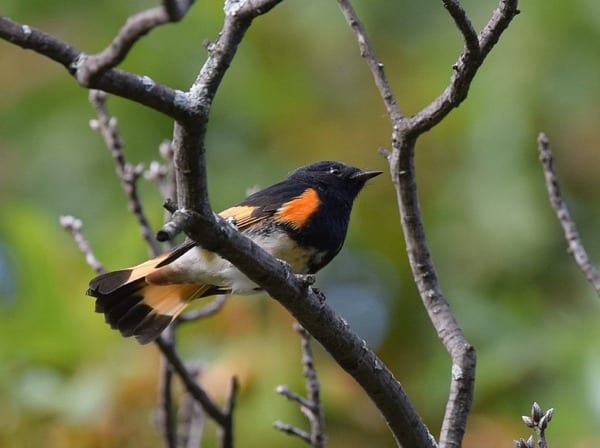
American Redstarts (Setophaga ruticilla) are one of many bird species known to benefit from bird-friendly coffee farms. Photo by Andy Reago and Chrissy McClarren
How to Select Sustainable and Bird Friendly Coffee
Look for the following labels on your bag of coffee the next time you’re deciding on a brand.
Bird Friendly Coffee
The certified Smithsonian Migratory Bird Center bird friendly coffee criteria ensures that coffee trees are shade-grown in optimal forest habitat, while excluding the use of chemical pesticides.
It is considered the most arduous sustainable coffee farm certification a farm can receive as it involves bird conservation requirements.
The Smithsonian’s outreach has been extensive, and Certified Bird Friendly coffee is now distributed by over 4,600 coffee producers.
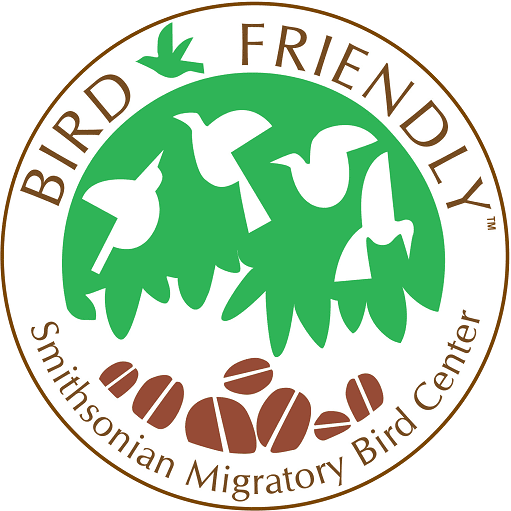
The Smithsonian Migratory Bird Center’s Bird-Friendly coffee logo indicates the highest standards for coffee farms in an effort to protect birds and the habitats on which they depend. Photo courtesy of Smithsonian Migratory Bird Center
My favorite sustainable and bird friendly coffee is Birds & Beans coffee!
A number of farms in Central and South America, and in Ethiopia, Japan, and Thailand, have earned their certification. What’s more, you can easily purchase this coffee online.
While finding bird friendly coffee in your local shop may be more challenging, there are a handful of other sustainability categories you can look for that support sustainable coffee farms and practices.
Sustainable Coffee Beans
Sustainable coffee is grown with natural resources and wildlife diversity conservation in mind, and preserves farm worker well-being.
Often, use of environmentally harmful pesticides and chemicals are also eliminated from the farming process.
Rainforest Alliance coffee, for example, ensures these considerations through a set of rigorous criteria that coffee farms must follow to be considered for their seal of approval.
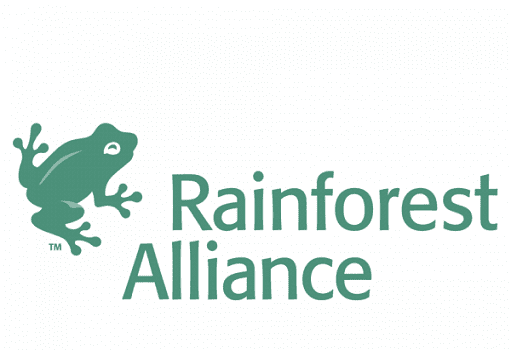
Look for labels and insignias such as the Rainforest Alliance frog to indicate sustainably grown coffee. Photo courtesy of Rainforest-alliance.org
Keep an eye out for Fair Trade coffee labels, too.
These coffees are required to undergo evaluation by the Fair Trade Organization to ensure growing, harvesting, and packaging practices meet Fair Trade standards. This includes banning of certain chemicals and implementing fair work environments for coffee harvesters and producers.
Even smaller, local coffee roasters will ensure Fair Trade or shade-grown status, such as Dean’s Beans in Massachusetts, United States.
Overall, look for shade-grown coffee to increase the chances of a higher-quality, environmentally friendly coffee bean.
You can also look out for Certified Organic and USDA Certified coffees. While these don’t guarantee shade-grown, they do require that pesticides and other potentially harmful chemicals are eliminated from the coffee farm environment.
Type of Coffee Bean
Since certain types of coffee beans do best in full-sun and others in full- or part-shade, selecting bean varieties that require shade can, by proxy, eliminate purchasing coffee grown unsustainably (i.e., full-sun coffee).
Purchase Arabica part- and full-shade coffee, which thrives in lower sun environments optimal for a diverse and balanced coffee ecosystem.
Eliminating Robusta coffee, which thrives on full-sun and less sustainable coffee production practices, can benefit birds and the environment.
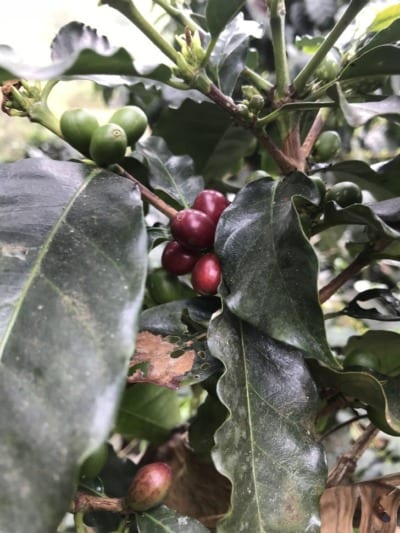
Coffee beans fruit from coffee trees in a diverse Colombian coffee farm. Photo by Jonathon Valente
Coffee Consumption Tips to Help Reduce Your Environmental Impact and Help Birds
— Purchase coffees that indicate sustainable production, ideally with the Bird Friendly Coffee, Rainforest Alliance Coffee, or other “shade grown coffee” labels.
— Ditch the single-cup brewers, such as K-cups. Choose instead a French press or other coffee maker that eliminates waste (and saves you money!). You can also buy a reusable K-cup for your machine if you can’t part with your single-cup brewer.
— Choose Arabica coffee beans, as these are more likely to be produced at a shade-grown farm. Remember to avoid Robusta beans!
— Invest in a good, reusable coffee mug instead of using one-time use cups. Consider leaving it (cleaned, of course!) in your car, at the office, etc. to refill your coffee throughout the morning, or day.
— If possible, buy your coffee in bulk to eliminate unnecessary plastic waste.
The Future of Coffee is Sustainable and Bird Friendly Coffee
Whole nations have cultures built around their coffee consumption. Countries such as Colombia, Vietnam, and Brazil have entire industries for coffee exports, totaling in the billions of dollars every year, and many thousands of people depend on these industries to make a living.
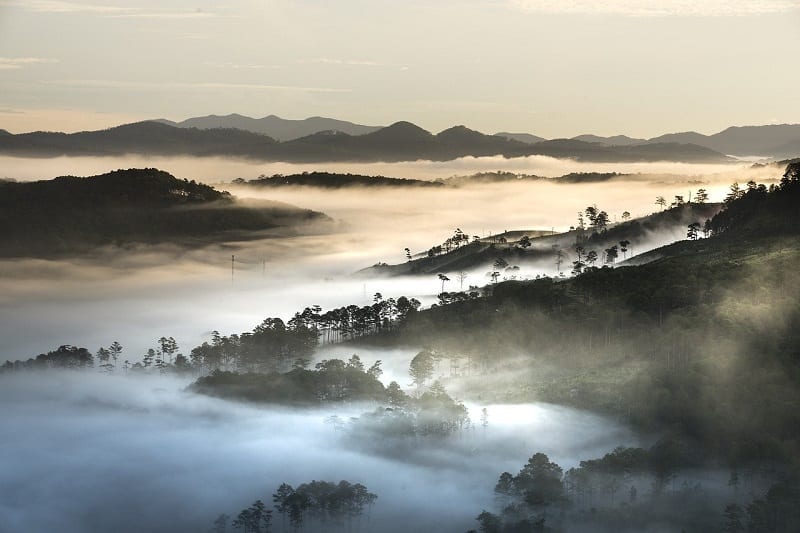
Vietnam is one of the leading coffee producers in the world, however, the majority of their coffee production is the Robusta, sun-dependent variety. Photo courtesy of Quangpraha, Pixabay
Unsustainable farming and harvesting practices, and the changing of temperatures and weather patterns in the tropics, has led to increased concern for the longevity and health of the coffee farming industry.
Nutrient-poor soils created by years of turn over at full-sun coffee farms, lack of diversity in habitat for wildlife, and disease spreading to coffee plants all play a role in potentially eliminating coffee as an easily acquirable commodity.
Organizations, such as the Smithsonian Migratory Bird Center and the Rainforest Alliance, are paving the way to ensuring a future for coffee.
Creating optimal coffee habitat and investing in the health of plants and wildlife secures the future of coffee.
Commercial giants are even beginning to get involved in the movement.
For example, Starbucks shops are found in more than 75 countries in the world, and the number of other coffee shops only continues to grow. Starbucks is one of many large-scale companies that pledged to ensure their coffee is sourced from sustainable producers.
It’s safe to say, our love for and addiction to coffee isn’t going away any time soon.
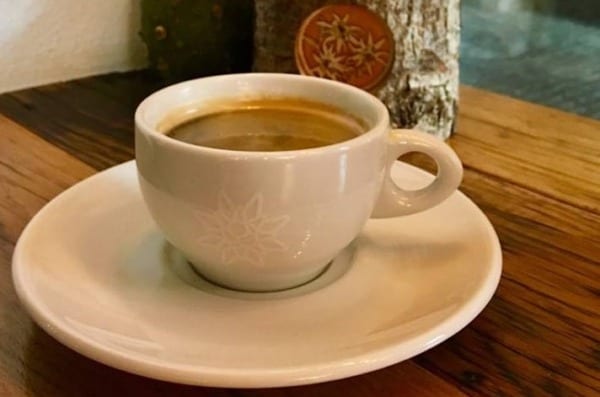
Join us in selecting coffees that are good for the environment, sustainable communities, and birds!
Cheers!
Christa and Nathan
Do you love coffee? Do you have a go-to coffee seller that ensures bird friendly habitat? Let us know in the comments!
We’d love to see you over at our Facebook and Pinterest pages! Follow us there :)
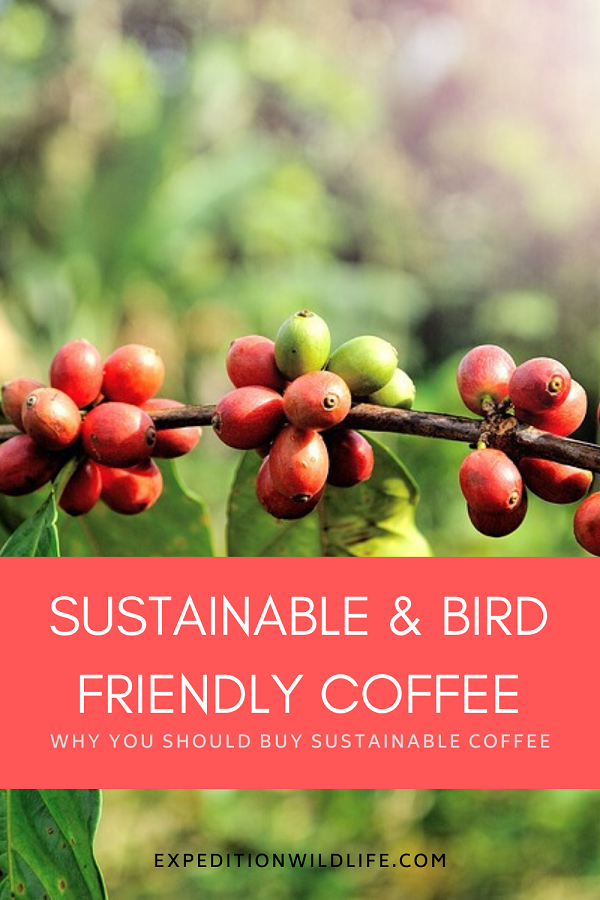

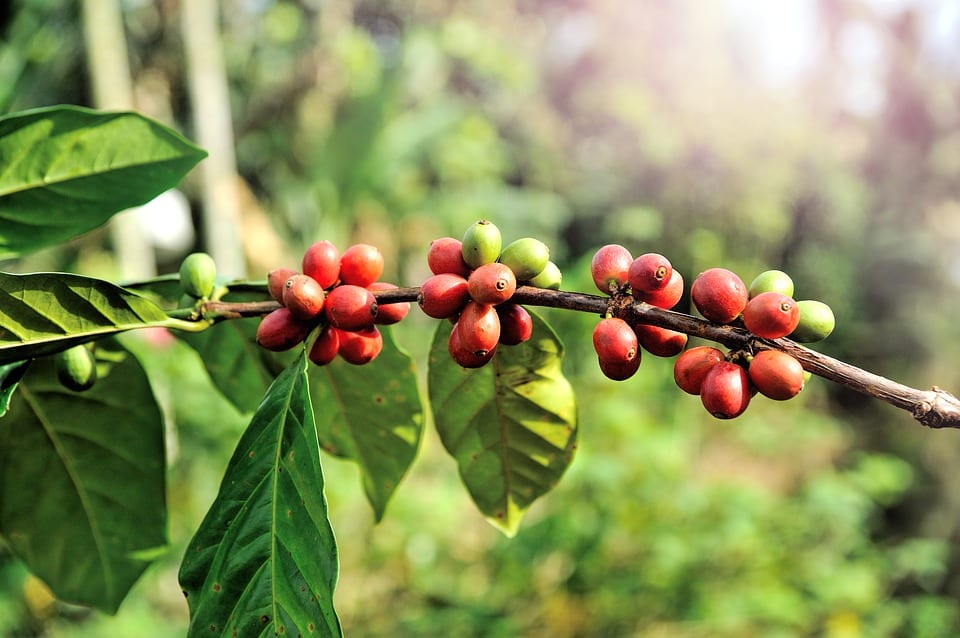
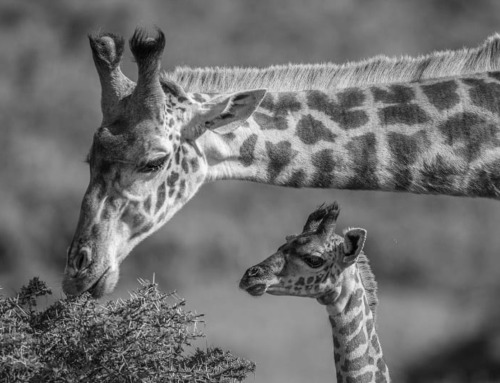
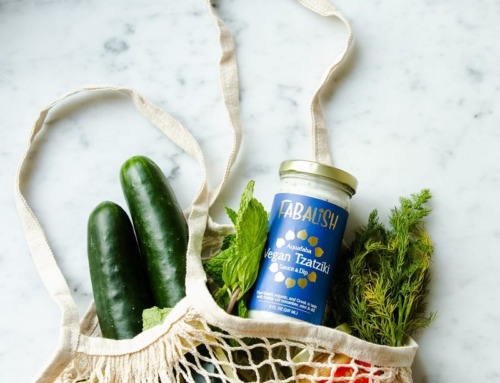
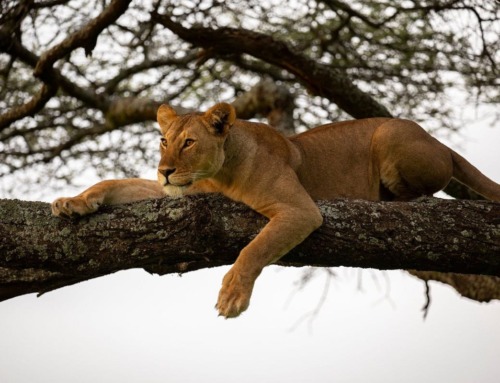
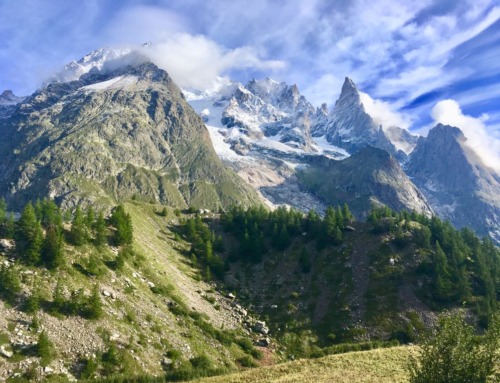
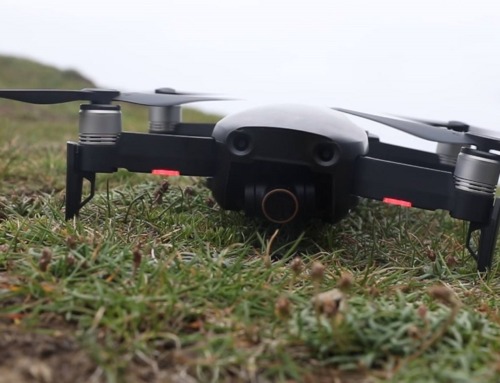
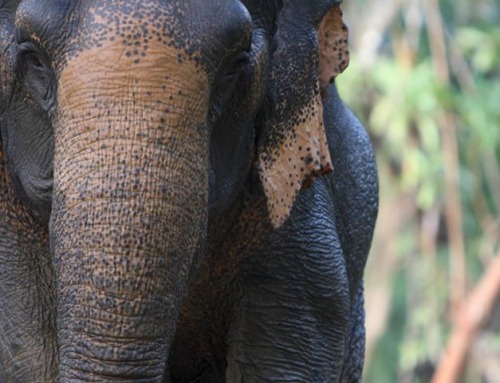
Leave A Comment